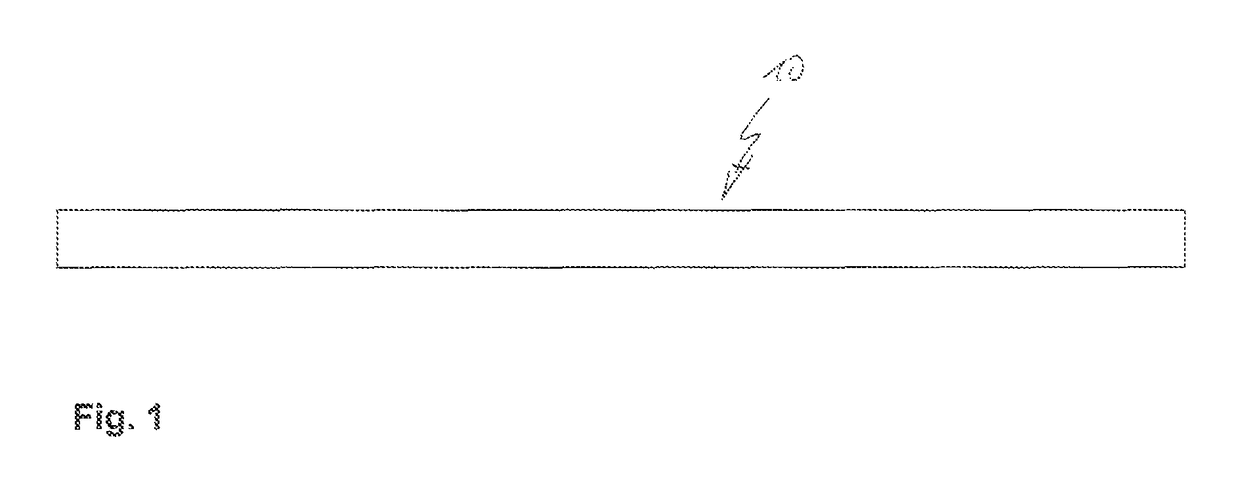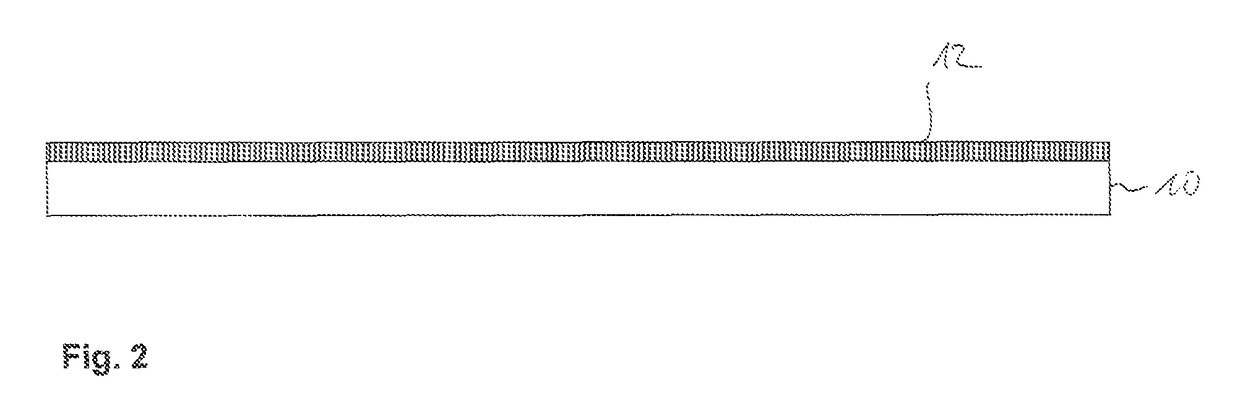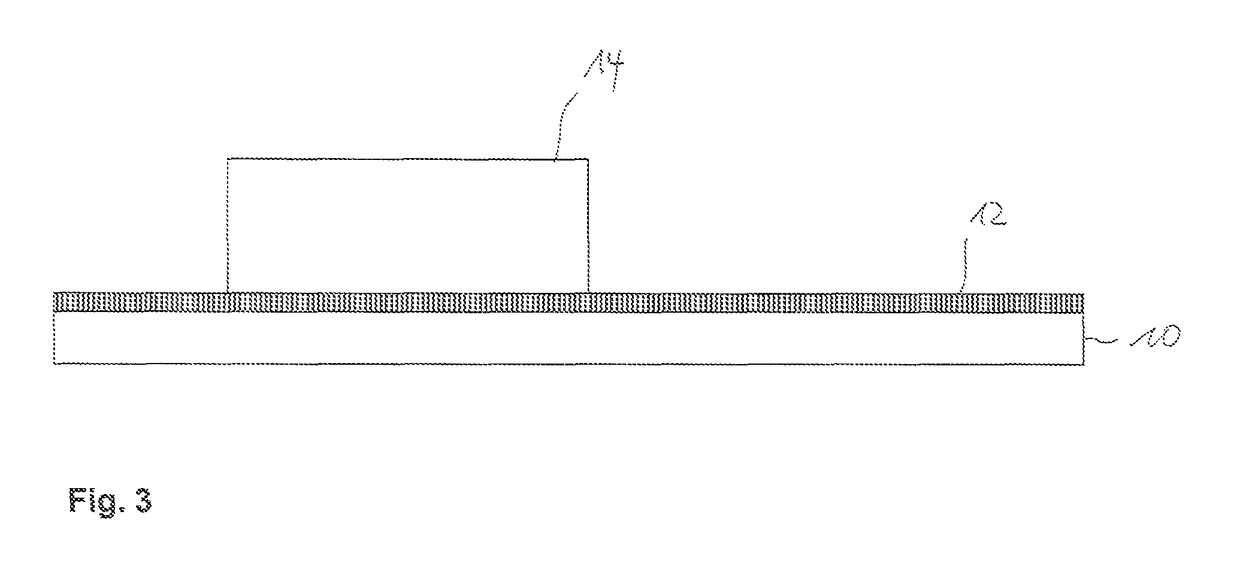Electronic sub-assembly and method for the production of an electronic sub-assembly
a technology of electronic sub-assembly and sub-assembly, which is applied in the direction of basic electric elements, electrical apparatus, and association of printed circuit non-printed electric components, can solve the problems of loss of positioning accuracy, and achieve the effects of preventing any slippage during further processing, low thermal resistance, and loss of positioning accuracy
- Summary
- Abstract
- Description
- Claims
- Application Information
AI Technical Summary
Benefits of technology
Problems solved by technology
Method used
Image
Examples
Embodiment Construction
[0026]FIG. 1 shows a starting or base substrate 10 for an electronic sub-assembly according to the invention. The starting substrate 10 is made of an electrically conductive material. This can be copper sheet metal. Alternatively, it can also be a substrate made of a material with a low heat expansion coefficient; e.g., of a suitable iron-nickel alloy covered with copper on both sides. An example for the latter is copper-Invar®-copper sheet metal (CIC sheet metal), as it is commercially available ready-made. Typical thicknesses of such a commercially available ready-made CIC layer are 150 μm of Invar® and 18 μm each of copper.
[0027]In a next step, a first layer 12 made of an electrically insulating material is deposited on the base or starting substrate 10 (cf. FIG. 2). Said first layer is a layer made of a material that contains resin and is curable, as it is well known in the production of electronic sub-assemblies. The person skilled in the art also calls such a material a prepre...
PUM
 Login to View More
Login to View More Abstract
Description
Claims
Application Information
 Login to View More
Login to View More - R&D
- Intellectual Property
- Life Sciences
- Materials
- Tech Scout
- Unparalleled Data Quality
- Higher Quality Content
- 60% Fewer Hallucinations
Browse by: Latest US Patents, China's latest patents, Technical Efficacy Thesaurus, Application Domain, Technology Topic, Popular Technical Reports.
© 2025 PatSnap. All rights reserved.Legal|Privacy policy|Modern Slavery Act Transparency Statement|Sitemap|About US| Contact US: help@patsnap.com



